Linux PC (Dual Core AMD Opteron(tm) Processor 875)
| Section | Description | Score | Geekbench Score |
|---|---|---|---|
| Geekbench 2.0.3 for Linux x86 (32-bit) | |||
| Integer | Processor integer performance | 6624 | 6742 |
| Floating Point | Processor floating point performance | 11483 | |
| Memory | Memory performance | 1444 | |
| Stream | Memory bandwidth performance | 1159 | |
Result Information
System Information
Integer Performance
| Integer | 6624 | |
|---|---|---|
|
Blowfish single-core scalar |
1844 81.0 MB/sec |
|
|
Blowfish multi-core scalar |
9790 401 MB/sec |
|
|
Text Compress single-core scalar |
1567 5. |
|
|
Text Compress multi-core scalar |
21292 69.8 MB/sec |
|
|
Text Decompress single-core scalar |
1438 5.91 MB/sec |
|
|
Text Decompress multi-core scalar |
16954 67.5 MB/sec |
|
|
Image Compress single-core scalar |
1293 10.7 Mpixels/sec |
|
|
Image Compress multi-core scalar |
8328 70.1 Mpixels/sec |
|
|
Image Decompress single-core scalar |
999 16.8 Mpixels/sec |
|
|
Image Decompress multi-core scalar |
6925 113 Mpixels/sec |
|
|
Crafty Chess single-core scalar |
1990 1.01 Mnodes/sec |
|
|
Crafty Chess multi-core scalar |
2313 1.  12 Mnodes/sec 12 Mnodes/sec
|
|
|
Lua single-core scalar |
1803 694 Knodes/sec |
|
|
Lua multi-core scalar |
16204 6.23 Mnodes/sec |
|
Floating Point Performance
| Floating Point | 11483 | |
|---|---|---|
|
Mandelbrot single-core scalar |
1567 1.04 Gflops |
|
|
Mandelbrot multi-core scalar |
11105 7.27 Gflops |
|
|
Dot Product single-core scalar |
2109 1.02 Gflops |
|
|
Dot Product multi-core scalar |
2558 1.17 Gflops |
|
|
Dot Product single-core vector |
982 1.18 Gflops |
|
|
Dot Product multi-core vector |
1321 1.37 Gflops |
|
|
LU Decomposition single-core scalar |
1525 1.  36 Gflops 36 Gflops
|
|
|
LU Decomposition multi-core scalar |
2152 1.89 Gflops |
|
|
Primality Test single-core scalar |
1935 289 Mflops |
|
|
Primality Test multi-core scalar |
21924 4.07 Gflops |
|
|
Sharpen Image single-core scalar |
5104 11.9 Mpixels/sec |
|
|
Sharpen Image multi-core scalar |
33891 78.1 Mpixels/sec |
|
|
Blur Image single-core scalar |
6550 5.18 Mpixels/sec |
|
|
Blur Image multi-core scalar |
68041 53.5 Mpixels/sec |
|
Memory Performance
| Memory | 1444 | |
|---|---|---|
|
Read Sequential single-core scalar |
1181 1.  45 GB/sec 45 GB/sec
|
|
|
Write Sequential single-core scalar |
1727 1.18 GB/sec |
|
|
Stdlib Allocate single-core scalar |
2469 9.22 Mallocs/sec |
|
|
Stdlib Write single-core scalar |
734 1.52 GB/sec |
|
|
Stdlib Copy single-core scalar |
1112 1.15 GB/sec |
|
Stream Performance
| Stream | 1159 | |
|---|---|---|
|
Stream Copy single-core scalar |
1179 1.61 GB/sec |
|
|
Stream Copy single-core vector |
1260 1.63 GB/sec |
|
|
Stream Scale single-core scalar |
1235 1.60 GB/sec |
|
|
Stream Scale single-core vector |
1170 1. 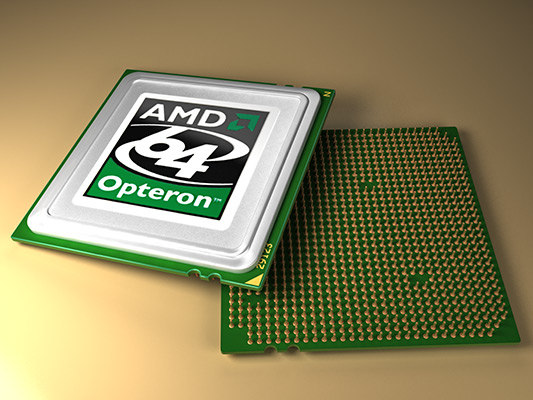 58 GB/sec 58 GB/sec
|
|
|
Stream Add single-core scalar |
1077 1.63 GB/sec |
|
|
Stream Add single-core vector |
1240 1.73 GB/sec |
|
|
Stream Triad single-core scalar |
1189 1.64 GB/sec |
|
|
Stream Triad single-core vector |
927 1.74 GB/sec |
|
Distributors
| |||||||||||||||||||||||||||||||||||||||||||||||||||||||||||||||||||||||||||||||||||||||||||||||||||||||||||||||||||||||||||||||||||||||||||||||||||||||||||||||||||||||||||||||||||||||||||||||||||||||||||||||||||||||||||||||||||||||||||||||||||||||||||||||||||||||||||||||||||||||||||||||||||||||||||||||||||||||||||||||||||||||||||||||||||||||||||||||||||||||||||||||||||||||||||||||||||||||||||||||||||||||||||||||||||||||||||||||||||||||||||||||||||||||||||||||||||||||||||||||||||||||||||||||||||||||||||||||||||||||||||||||||||||||||||||||||||||||||||||||||||||||||||||||||||||||||||||||||||||||||||||||||||||||||||||||||||||||||||||||||||||||||||||||||||||||||||||||||||||||||||||||||||||||||||||||||||||||||||||||||||||||||||||||||||||||||||||||||||||||||||||||||||||||||||||||||||||||||||||||||||||||||||||||||||||||||||||||||||||||||||||||||||||||||||||||||||||||||||||||||||||||||||||||||||||||||||||||||||||||||||||||||||||||||||||||||||||||||||||||||||||||||||||||||||||||||||||||||||||||
| Country | Distributor |
|---|---|
| 1 distributor(s) | |
| 2 distributor(s) |
Login
or Register as new user (free)
if you want to see more distributor details .
If you represent a supplier and want to include your information here, please contact us.
Advanced Micro Devices Pogo Linux PerformanceWare 3566, AMD Opteron (TM) 875
CFP2000 Result: Advanced Micro Devices Pogo Linux PerformanceWare 3566, AMD Opteron (TM) 875
|
CFP2000 Result Copyright © 1999-2005 Standard Performance Evaluation Corporation |
|
Advanced Micro Devices Pogo Linux PerformanceWare 3566, AMD Opteron (TM) 875 |
|
| SPEC license # 49 | Tested by: AMD, Austin, TX | Test date: Apr-2005 | Hardware Avail: May-2005 | Software Avail: May-2005 |
| Benchmark | Base Copies |
Base Runtime |
Base Ratio |
Copies | Runtime | Ratio | |
|---|---|---|---|---|---|---|---|
| 168.wupwise | 4 | 79.2 | 93.7 | 4 | 70.9 | 105 | |
171. swim swim |
4 | 249 | 57.9 | 4 | 242 | 59.4 | |
| 172.mgrid | 4 | 161 | 51.8 | 4 | 153 | 54.5 | |
| 173.applu | 4 | 152 | 64.0 | 4 | 135 | 72.3 | |
| 177.mesa | 4 | 82.4 | 78.8 | 4 | 77. 4 4 |
83.9 | |
| 178.galgel | 4 | 136 | 99.3 | 4 | 126 | 107 | |
| 179.art | 4 | 156 | 77.1 | 4 | 99.1 | 122 | |
| 183.equake | 4 | 121 | 50.0 | 4 | 120 | 50.1 | |
| 187.facerec | 4 | 118 | 75. 0 0 |
4 | 115 | 76.6 | |
| 188.ammp | 4 | 206 | 49.6 | 4 | 194 | 52.7 | |
| 189.lucas | 4 | 161 | 57.8 | 4 | 161 | 57.7 | |
| 191.fma3d | 4 | 175 | 55.8 | 4 | 174 | 56.0 | |
| 200.sixtrack | 4 | 155 | 33.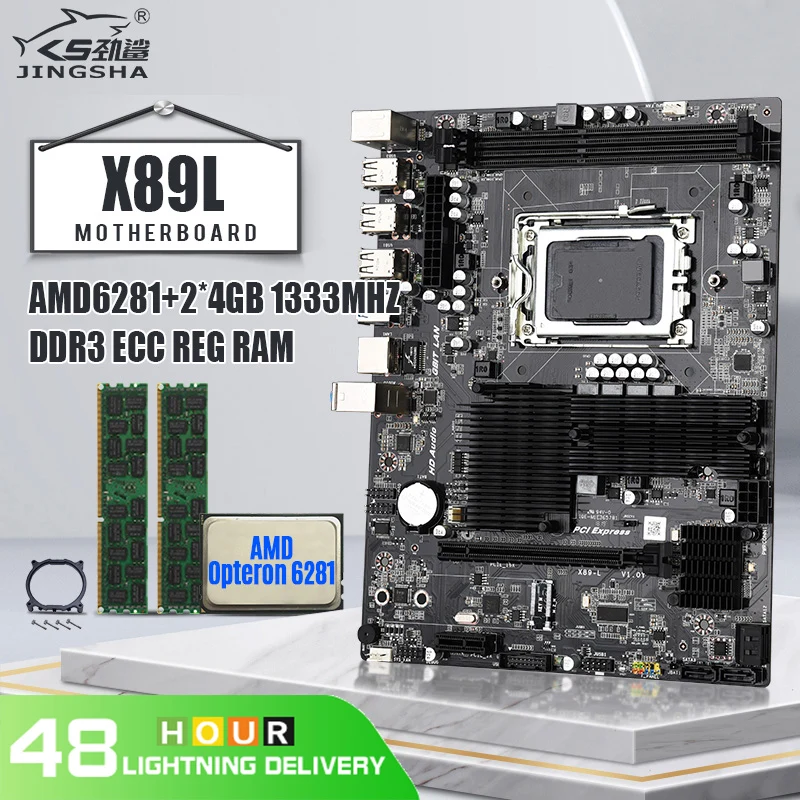 0 0 |
4 | 152 | 33.6 | |
| 301.apsi | 4 | 201 | 60.1 | 4 | 195 | 61.9 | |
| SPECfp_rate_base2000 | 62.2 | ||||||
| SPECfp_rate2000 | 67.0 | ||||||
|
|
||||||||||||||||||||||||||||||||||||||||||
| Notes / Tuning Information |
|---|
Tested by Advanced Micro Devices +FDO: PASS1= -fb_create fbdata PASS2= -fb_opt fbdata +ACML means linking with AMD Core Math Library V2. |
For questions about this result, please contact the tester.
For other inquiries, please contact [email protected]
Copyright © 1999-2005 Standard Performance Evaluation Corporation
First published at SPEC. org on 03-May-2005
org on 03-May-2005
Generated on Thu May 5 11:07:51 2005 by SPEC CPU2000 HTML formatter v1.01
AMD’s Opteron 146 processor — The Tech Report
IN YESTERDAY’S workstation comparo, we saw that the AMD Opteron was a promising workstation chip in need of a few more MHz. It’s time now to turn up the clock speed. The Opteron 146 processor launched just last week, aimed at single-processor workstations. This new chip, based on AMD’s “Hammer” or K8 core, runs at 2GHz, and has all the architectural enhancements of its Opteron brethren. Unlike the 24x and 84x Opteron models, though, the 146 is not intended for use in multiprocessor configurations. That means, interestingly enough, that the Opteron 146’s most direct competition is Intel’s single-processor workstation setup, the Pentium 4 3.2GHz with the 875P chipset.
Yes, that’s right, one week before the Athlon 64 processor is due for its introduction to the public, we have a 2GHz K8 chip ready to take on a Pentium 4 3.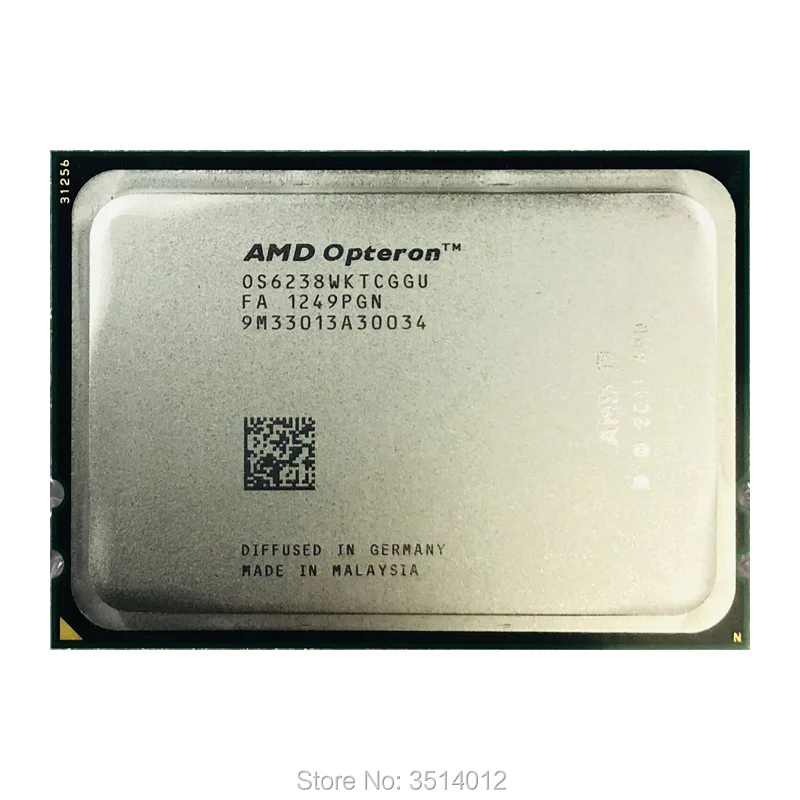 2GHz. One might think this could be an enlightening preview of things to come. And one might be right.
2GHz. One might think this could be an enlightening preview of things to come. And one might be right.
If you haven’t read our workstation comparo, you’d best do so now, because I’m not going to rehash all of the Opteron’s improvements over the Athlon XP it replaces. I won’t be talking about its SSE2 support, or its slightly longer pipeline, or its AMD64 extensions for 64-bit computing. AMD’s new 0.13-micron SOI fab processo won’t be discussed here. And I especially won’t be talking about the Opteron’s on-chip memory controller, with dual channels of DDR memory. Nope, none of that. So you’d best read that other article.
I will, however, mention that we’ve tested the Opteron 146 with dual channels of DDR400 memory, upping the ante from the DDR333 speeds we used for our previous article. Registered DDR400 memory ain’t easy to come by, but we managed to snag some for use with the 146. The move to 400MHz memory ought to put the Opteron 146 at rough parity, memory-wise, with our Pentium 4 3. 2GHz test system, which also has dual-channel DDR400 memory.
So the stage is set. The Opteron’s core and memory clock speeds have both been ratcheted up, and the Pentium 4 over in the corner is starting to look a little nervous. Let’s see what happens next.
The Opteron 146 up close and personal
Test notes
We are blatantly recycling the benchmark results from our workstation comparo, so you’ll see a number of interesting workstation configs compared to the Opteron 146 today. Obviously, the most relevant competition is the Pentium 4. We’ll also be intrigued to see how the Opteron 146a K8 at 2GHzmatches up against the Athlon XP 3200+a K7 at 2.2GHz. AMD’s K8 core seems to have improved clock-for-clock performance in a range of scenarios, and we’ll be watching to see how the K7 and K8 compare.
As we noted yesterday, one facet of our tests that may send market segmentation fetishists into a tizzy is our use of a non-workstation-class GeForce FX 5900 Ultra graphics card. Never mind that there’s a Quadro FX based on the same chip to match it, the card we’ve used for testing doesn’t fit the workstation mold, and we own up to it. Truth is, we blew our budget on the workstation-class processors, instead. The better-tuned and certified OpenGL drivers that come with a Quadro would only have made a difference in a couple of our benchmarks, anyhow: SPECviewperf and the OpenGL portions of Cinebench. Otherwise, most of the tests we’ve run don’t use real-time 3D graphics.
Our testing methods
As ever, we did our best to deliver clean benchmark numbers. Tests were run at least twice, and the results were averaged.
Our test systems were configured like so:
| Athlon XP | K8T800 Opteron 240 | nForce3 Opteron 240 | Opteron 146 | Xeon | Pentium 4 | |
| Processor | Athlon XP ‘Barton’ 3200+ 2. |
AMD Opteron 240 1.4GHz 2 x AMD Opteron 240 1.4GHz |
AMD Opteron 240 1.4GHz | AMD Opteron 146 2.0GHz | 2 x Xeon 2.66GHz | Pentium 4 3.2GHz |
| Front-side bus | 400MHz (200MHz DDR) | HT 16-bit/800MHz downstream HT 16-bit/800MHz upstream |
HT 16-bit/600MHz downstream HT 8-bit/600MHz upstream |
HT 16-bit/600MHz downstream HT 8-bit/600MHz upstream |
533MHz (133MHz quad-pumped) | 800MHz (200MHz quad-pumped) |
| Motherboard | Asus A7N8X Deluxe v2. |
MSI 9130 | Asus SK8N | Asus SK8N | Tyan Tiger i7505 | Abit IC7-G |
| North bridge | nForce2 SPP | K8T800 | nForce3 Pro | nForce3 Pro | E7505 MCH | 82875P MCH |
| South bridge | nForce2 MCP-T | VT8237 | 82801DB ICh5 | 82801ER ICH5R | ||
| Chipset drivers | nForce Unified 2. |
4-in-1 v.4.49 AGP 4.42 |
AGP 3.34 ATA 3.44 Audio 5.10.0.5100 |
AGP 3.34 ATA 3.44 Audio 5.10.0.5100 |
INF Update 5.0.2 IAA 2.3.0.2160 Audio 5.10.0.5250 |
INF Update 5.0.1015 ATA 5.0.1007.0 Audio 5.10.0.5250 |
| BIOS revision | 1005 | 1.0 | 1002 | 1002 | 1.01 | 1.6 |
| Memory size | 1GB (2 DIMMs) | 1GB (2 DIMMs) | 1GB (2 DIMMs) | 1GB (2 DIMMs) | 1GB (4 DIMMs) | 1GB (2 DIMMs) |
| Memory type | Corsair TwinX XMS4000 DDR SDRAM at 400MHz | Infineon PC2700 registered ECC DDR SDRAM at 333MHz | Infineon PC2700 registered ECC DDR SDRAM at 333MHz | Infineon PC3200 registered ECC DDR SDRAM at 400MHz | Corsair TwinX XMS3200LL DDR SDRAM at 266MHz | Corsair TwinX XMS4000 DDR SDRAM at 400MHz |
| Hard drive | Seagate Barracuda V 120GB ATA/100 | Seagate Barracuda V 120GB SATA 150 | Seagate Barracuda V 120GB ATA/100 | Seagate Barracuda V 120GB ATA/100 | Seagate Barracuda V 120GB ATA/100 | Seagate Barracuda V 120GB SATA 150 |
| Audio | nForce2 MCP/ALC650 | Creative SoundBlaster Live! | nForce3 Pro/ALC650 | nForce3 Pro/ALC650 | ICh5/ALC650 | ICH5/ALC650 |
| Graphics | GeForce FX 5900 Ultra | |||||
| OS | Microsoft Windows XP Professional | |||||
| OS updates | Service Pack 1, DirectX 9. |
|||||
All tests on the Pentium 4 and Xeon systems were run with Hyper-Threading enabled.
One note about sound. The MSI 9130’s audio ports are located on a PCI slot plate that connects to the 9130 via a header. We first received the 9130 sans manual or audio connectors, so we tested it with a separate sound card. We used built-in audio solutions on the other platforms.
Thanks to Corsair for providing us with memory for our testing. If you’re looking to tweak out your system to the max and maybe overclock it a little, Corsair’s RAM is definitely worth considering.
The test systems’ Windows desktops were set at 1152×864 in 32-bit color at an 85Hz screen refresh rate. Vertical refresh sync (vsync) was disabled for all tests.
We used the following versions of our test applications:
- Cachemem 2.65MMX
- SiSoft Sandra MAX3! (2003.7.9.73)
- Compiled binary of C Linpack port from Ace’s Hardware
- Discreet 3ds max 5.
1 SP1
- NewTek Lightwave 7.5
- Cinebench 2003
- POV-Ray for Windows v3.5
- PICCOLOR v4.0 build 451
- SPECviewperf 7.1
- ScienceMark 2.0 beta (06SEP03-A build)
- Sphinx 3.3
- LAME 3.93.1 (build from mitiok.cjb.net)
- Xmpeg 5.0.1 with DivX Video 5.05
- Quake III Arena v1.31
All the tests and methods we employed are publicly available and reproducible. If you have questions about our methods, hit our forums to talk with us about them.
Memory performance
The Opteron 146 opens our synthetic memory tests with a bang, beating the Pentium 4 outright in Sandra’s memory bandwidth testa feat we’ve not seen since the introduction of the Pentium 4, if I recall correctly. Cachemem’s memory read test tilts toward the P4, but the Opteron is a tad faster at writing to memory.
Here’s a Linpack result to get excited about (if you are a total geek). The Opteron 146’s large L1 cache gives it an advantage with matrix sizes over 512K, and its fast memory controller sustains that advantage as matrix sizes move beyond 1MB.
We can see the impact of the Opteron’s integrated memory controller most vividly in our latency test. The Opteron 146 achieves the lowest memory access times we’ve ever seen.
Folks, we have a new memory performance champion. AMD’s decision to bring the memory controller on-die with the Opteron processor pays impressive dividends in our synthetic memory tests. In terms of both memory bandwidth and access latencies, interrelated as they are, the Opteron 146 looks like something special. Now, let’s see how that translates into application performance.
3ds max rendering
We begin our 3D rendering tests with Discreet’s 3ds max, one of the best known 3D animation tools around. 3ds max is both multithreaded and optimized for SSE2, making it a perfect playground for our Xeons and Opterons. We rendered a couple of different scenes at 1024×465 resolution, including the Island scene shown below. Our testing techniques were very similar to those described in this article by Greg Hess. In all cases, the “Enable SSE” box was checked in the application’s render dialog.
The P4 and Opteron split our 3ds max rendering tests.
Lightwave rendering
NewTek’s Lightwave is another popular 3D animation package that includes support for multiple processors and is highly optimized for SSE2. Lightwave can render very complex scenes with realism, as you can see from the sample scene, “A5 Concept,” below.
Where 3ds max is self-tuning, though, Lightwave is not. Users may choose the number of rendering threads to execute in Lightwave. We tried a number of different configurations and came up with the following. The single-processor Opteron and Athlon systems always performed best with a single thread. The multi-processor and Hyper-Threaded systems were somewhat trickier, so we’ve reported scores with two, four, or eight threads, depending on the situation. In all cases, the fastest score was always reported.
The Pentium 4 proves a little faster in Lightwave, which really does rely heavily on SSE2. However, look at how well the Opteron 146 has closed the gap. Where the Athlon XP wasn’t even in contention, the Opteron 146 is right on the P4’s heels.
POV-Ray rendering
POV-Ray is the granddaddy of PC ray-tracing renderers, and it’s not multithreaded in the least. Don’t ask me whyseems crazy to me. POV-Ray also relies more heavily on x87 FPU instructions to do its work, because it contains only minor SIMD optimizations.
We’ve tested with a pair of scenes: the old “chess2.pov” scene we’ve been using forever, and the POV-Ray 3.5 benchmark scene, which apparently tests some of the SIMD-optimized codepaths in this new POV-Ray release.
The Opteron turns in a very nice time in our chess2.pov scene, but it stumbles on the official POV-Ray benchmark scene. I have no good explanation why the Opteron would render the scene that much slower than the Athlon XP. I think perhaps chess2.pov is a more typical scene for a ray-tracer like POV-Ray, though, and the Opteron 146 renders that scene quickly.
Cinebench 2003 rendering and shading
Cinebench is based on Maxon’s Cinema 4D modeling, rendering, and animation app. This revision of Cinebench measures performance in a number of ways, including 3D rendering, software shading, and OpenGL shading with and without hardware acceleration.
Cinema 4D’s renderer is multithreaded, so it takes advantage of Hyper-Threading and SMP. For the Athlon XP and the single-CPU Opteron systems, I’ve reported the single-processor results. For the rest of the systems, I’ve reported the multi-threaded results, which in all cases were notably faster.
Cinebench’s renderer is very well optimized for SMP and SMT systems, and it shows in the benchmark scores. The Hyper-Threaded dual Xeons take the top spot by a mile, and the Pentium 4 takes second. The Opteron 146 has to settle for fourth place.
The Opteron 146 essentially matches the P4 in Cinebench’s shading tests.
SPECviewperf workstation graphics
SPECviewperf simulates the graphics loads generated by various professional design, modeling, and engineering applications. It’s an interesting test for workstation-class systems, although, as we’ve noted, we don’t really have a workstation-class graphics card (or at least driver) in our test systems.
The Opteron 146 performs fairly well in viewperf, but it seems limited by our Asus SK8N test platform in the 3dsmax-02, drv-06, and proe-02 tests. Users of 3ds max, Design Review, and Pro/ENGINEER 2001 may want to consider using a K8T800-based motherboard, instead.
Note: We found a transcription error in our original set of results for light-06. The error overstated the performance of the Opteron 146 in this test. The corrected results are above.
ScienceMark
I’d like to thank Alex Goodrich for his help working through a few bugs the 2.0 beta version of ScienceMark. Thanks to his diligent work, I was able to complete testing with this impressive new benchmark, which is optimized for SSE, SSE2, 3DNow! and is multithreaded, as well.
In the interest of full disclosure, I should mention that Tim Wilkens, one of the originators of ScienceMark, now works at AMD. However, Tim has sought to keep ScienceMark independent by diversifying the development team and by publishing much of the source code for the benchmarks at the ScienceMark website. We are sufficiently satisfied with his efforts, and impressed with the enhancements to the 2.0 beta revision of the application, to continue using ScienceMark in our testing.
The molecular dynamics simulation models “the thermodynamic behaviour of materials using their forces, velocities, and positions”, according to the ScienceMark documentation. Sounds simple enough, right?
Primordia “calculates the Quantum Mechanical Hartree-Fock Orbitals for each electron in any element of the periodic table.” In our case, we used the default element, Argon.
The next test measures performance in AES encryption.
The Opteron 146 just barely edges out the Pentium 4 3.2GHz in the three tests above. The Athlon XP, in turn, just barely outdoes the Opteron 146 each time. Regardless, the Opteron looks very strong in scientific computing. No wonder AMD and its partners keep winning all those supercomputer contracts.
The Blas tests below measure matrix multiplication performance, much like Linpack. However, these tests are optimized in various ways, and we can see how the different codepaths perform. The SGEMM test measures single-precision floating-point math, where 3DNow! and SSE are able to help, while DGEMM is double-precision, so only SSE2 can accelerate these calculations.
These results are a little complicated. The Pentium 4 is faster overall in terms of peak performance with SSE and SSE2 codepaths, but the Opteron 146 looks better when the code varies from the P4’s optimal path.
LAME MP3 encoding
We used LAME 3.92 to encode a 101MB 16-bit, 44KHz audio file into a very high-quality MP3. The exact command-line options we used were:
lame –alt-preset extreme file.wav file.mp3
DivX video encoding
We tested DivX encoding using a new and different move clip than the one we’ve used in past tests, so don’t let these scores throw you. Xmpeg is partially self-tuning, and we noted that it chose the SSE2 Optimized iDCT on the Opteron processors. Xmpeg and DivX are also multithreaded, so a second processor should speed things up.
Intel’s Netburst architecture excels at streaming media encoding and similar tasks, but the Opteron closes the gap between the AMD and Intel processors, beating out the 2.2GHz Athlon XP by nearly 30 seconds.
Sphinx speech recognition
Ricky Houghton first brought us the Sphinx benchmark through his association with speech recognition efforts at Carnegie Mellon University. Sphinx is a high-quality speech recognition routine that needs the latest computer hardware to run at speeds close to real-time processing. We use two different versions, built with two different compilers, in an attempt to ensure we’re getting the best possible performance.
There are two goals with Sphinx. The first is to run it faster than real time, so real-time speech recognition is possible. The second, more ambitious goal is to run it at about 0. 8 times real time, where additional CPU overhead is available for other sorts of processing, enabling Sphinx-driven real-time applications.
Sphinx loves a fast memory subsystem, so the Opteron excels in Sphinx, nearly catching the Pentium 4 in a test the P4 usually owns.
PICCOLOR image analysis
We thank Dr. Reinert Muller with the FIBUS Institute for pointing us toward his PICCOLOR benchmark. This image analysis and processing tool is partially multithreaded, and it shows us the results of a number of simple image manipulation calculations. The overall score is indexed to a Pentium III 1GHz system based on a VIA Apollo Pro 133. In other words, the reference system would score a 1.0 overall.
AMD’s new baby leads all comers in PICCOLOR, nearly tripling the performance of a 1GHz Pentium III system. Here’s how the individual tests break down:
Talk amongst yourselves.
Just for fun: gaming performance
I’m not supposed to test the Opterona serious workstation processorwith video games. What kind of a loser site are we, anyway, that we would stoop to such lows?
I’ll tell you. We’re the kind of site that’s interested to see a sneak preview of how the Hammer architecture might stack up against the Pentium 4 in a little more casual setting. Indulge us, if you will.
Quake III Arena
We tested one whole game, Quake III Arena, which actually supports multithreading. For multiprocessor systems and those with Hyper-Threading, we used the “r_smp 1” console command to invoke Q3’s multithreaded mode, which we tested alongside its regular mode.
Well, well, well. The Opteron’s workstation-class talents seem to transpose well into a different key, don’t they?
Conclusions
AMD is aiming the Opteron 146 primarily at animators, musicians, game developers, and designers. Based on what we’ve seen here, I expect those folks will appreciate the Opteron 146’s combination of excellent performance and future-proof 64-bit computing capabilities. The Opteron 146 proves AMD’s Hammer architecture can indeed run with Intel’s Pentium 4 processors, even with strictly 32-bit code. In fact, the race is neck-and-neck between the 2GHz Opteron and the 3.2GHz Pentium 4. Most strikingly, the Opteron 146 is strong in areas where the Athlon XP couldn’t keep up with the Pentium 4, from our synthetic memory tests to real-world applications like 3D rendering, speech recognition, and media encoding.
Intel’s fastest Pentium 4 may still have a slight performance edge overall, depending on how one weights the benchmark results, but I’d trade that edge for the promise of 64-bit computing capabilities. The extra registers in the AMD64 ISA promise better performance once applications are compiled for it. And potential workstation buyers will especially want to ponder how a nice, fat set of four 2GB DIMMs might change their work environments when AMD64-compatible 64-bit software becomes available. For some, I expect, the impact could be quite tangible.
AMD Opteron X2 875 — 12 secret facts, review, specifications, reviews.
Top specifications and features
- Heat dissipation (TDP)
- Technological process
- Number of transistors
- Number of Cores
- Number of threads
Performance
AMD Opteron X2 875:
932
Best score:
Interfaces and communications
AMD Opteron X2 875:
500
Best score:
Main Features of
AMD Opteron X2 875:
712
Best score:
Thermal Dissipation (TDP)
AMD Opteron X2 875:
95W
Best score:
0.025 W
Process
AMD Opteron X2 875:
90nm
Best score:
5nm
Description
In this case, the maximum frequency in Boost mode reaches 2. 2 Hz. 2 cores available. The L1 cache is 128 KB, L2 1 MB and L3 2 MB. Power consumption at peak times can reach 95 watts.
The maximum number of threads that AMD Opteron X2 875 can handle is 2.
AMD Opteron X2 875 works on 90nm architecture. Total number of transistors 233 million
Regarding memory specification.
Now about the tests of AMD Opteron X2 875. Based on the analysis of more than 4000 processors, AMD Opteron X2 875 ranked 4246 in the ranking of the best.
Why AMD Opteron X2 875 is better than others
No merits
- Thermal Dissipation (TDP) 95 W. This parameter is higher than 73%
- Process 90 nm. This parameter is higher than 89%
- Number of transistors 233 million. This parameter is lower than 39%
- Number of cores 2 . This parameter is lower than 87%
- Number of threads 2 . This setting is lower than 81%
- L2 cache size 1 MB. This parameter is lower than that of 58%
- L1 cache size 128 KB.
This parameter is lower than 56%
- Maximum clock frequency in Turbo 2.2 GHz mode. This parameter is lower than that of 62%
Review AMD Opteron X2 875
Performance
Interfaces and communications
Main characteristics
AMD Opteron X2 875 Review: Highlights
Number of threads
The more threads, the higher the performance of the processor, and it will be able to perform several tasks at the same time.
Show all
2
max 256
Average: 10.7
256
L1 cache size
Large amount of L1 memory accelerates results in CPU and system performance settings
Show all
128KB
max 4608
Average: 299.3 KB
4608KB
L2 Cache Size
L2 cache with large scratchpad memory to increase processor speed and overall system performance.
Show all
1MB
max 512
Average: 4.5 MB
512MB
Maximum Turbo Clock Speed
When the processor’s speed drops below its limit, it can jump to a higher clock speed to improve performance.
Show all
2.2GHz
max 5.5
Average: 3.2 GHz
5.5GHz
Number of cores
2
max 72
Mean: 5.8
72
Max. number of processors in configuration
eight
Mean: 1.3
8
socket
940
Process technology
The small size of the semiconductor means it is a new generation chip.
90 nm
Average: 36.8 nm
5 nm
Number of transistors
233 million
max 57000
Average: 1517.3 million
57000 million
Heat Dissipation (TDP)
The Heat Dissipation Requirements (TDP) is the maximum amount of energy that can be dissipated by the cooling system. The lower the TDP, the less power will be consumed.
Show all
95W
Average: 67.6W
0.025W
Supports 64-bit system
A 64-bit system, unlike a 32-bit system, can support more than 4 GB of RAM. This increases productivity. It also allows you to run 64-bit applications.
Show all
Yes
Destination
Server
FAQ
How many cores does the AMD Opteron X2 875 have?
2 cores.
What is the AMD Opteron X2 875 socket
AMD Opteron X2 875 uses 940 to install.
What is the maximum frequency of the AMD Opteron X2 875?
In this case, the maximum frequency in Boost mode reaches 2.2 Hz.
How much cache is the AMD Opteron X2 875?
L1 cache size is 128 KB, L2 1 MB and L3 2 MB.
How many watts does the AMD Opteron X2 875 consume?
Power consumption at peak times can reach 95 watts.
leave your feedback
90,000 AMD Opteron -875 Egypt (2200MHz, S940, L3 -, L2 2048 KB)
You are here
Home
Processor brand:
Model line of the processor:
Processor number:
nucleus:
Number of cores:
Processor clock speed:
Socket type:
Process technology:
L1 cache size:
L2 cache size:
L3 cache size:
Maximum memory bandwidth:
Processor type:
Release date:
Processor Description:
AMD brand processor with Opteron line (model range) and processor number: 875. This processor runs on the Egypt Core, the CPU itself is designed using a 90 nm process technology (lithography). The number of cores in the processor is 2, and the total clock speed is 2200MHz . This AMD brand CPU has a socket (connector) for connecting to the S940 motherboard. The volume of cache memory in the third level (L3) — and the cache memory in the second level (L2) is 2048 KB. Information about maximum memory bandwidth: -. This processor is positioned by the manufacturer as a CPU for systems of the type: Server. Known release (production) date for this processor: April 2005.
Information about the technical characteristics of the goods listed on the pages of the site is solely reference character and does not mean the presence of goods from sellers on the radio market.
Specify the availability of goods directly from sellers , contacting them using the contacts listed in the catalog of radio market companies.
CPUs most unlike this CPU
The Intel CPU is represented by the Pentium model number G3440T . This processor uses the Haswell Core and is made in Process 22 nm . The number of cores in it is 2 , and the total clock speed of this processor is 2800MHz . This Intel product connects to the computer motherboard using the LGA1150 connector (socket). The memory of the third level is 3072 KB , and the amount of memory of the second level is 512 KB . Maximum memory bandwidth found on the manufacturer’s website: 21.3 Gb/s . This processor is presented by the company as a CPU for systems: Desktop PCs . Start date of production (release) of this processor: Q2 2014 .
The AMD CPU is represented by the FX model line with the number 4320 . This processor uses the Vishera Core, and the processor itself is made according to the 32 nm manufacturing process. The number of cores in it is 4 , and the total clock speed of this processor is 4000MHz . This AMD Corporation product is connected to the computer motherboard using the AM3+ connector (socket). The memory of the third level is 4096 KB , and the amount of memory of the second level is 4096 KB . Maximum memory bandwidth found on the manufacturer’s website: 21 Gb/s . This processor is presented by the company as a CPU for systems: Desktop PCs . Start date of production (release) of this processor: 10/23/2012 .
The Intel CPU is represented by the Xeon model line with the number E5649 . This processor uses the Core Gulftown , and the processor itself is made according to the 32 nm manufacturing process. The number of cores in it is 6 , and the total clock speed of this processor is 2533MHz . This product is Intel Corporation connects to the computer motherboard using a connector (socket) LGA1366 . The memory of the third level is 12288 KB , and the amount of memory of the second level is 1536 KB . Maximum memory bandwidth found on the manufacturer’s website: 32 Gb/s . This processor is presented by the company as a CPU for systems: Server . Start date of production (release) of this processor: Q1 2011 .
You were viewing
Processor AMD Opteron-875 Egypt (2200MHz, S940, L3 -, L2 2048 KB)
Similar processors:
|
Processor AMD Opteron-865 Egypt (1800MHz, S940, L3 -, L2 2048 Kb) |
|
Processor AMD Opteron-870 Egypt (2000MHz, S940, L3 -, L2 2048 KB) |
|
Processor AMD Opteron-275 Italy (2200MHz, S940, L3 -, L2 2048 Kb) |
|
Processor AMD Opteron-870 HE Egypt (2000MHz, S940, L3 -, L2 2048 KB) |
|
Processor AMD Opteron-865 HE Egypt (1800MHz, S940, L3 -, L2 2048 KB) |
Moscow, 17 Kostromskaya st. 0001
Today, our readers are offered a selection of materials dedicated to processors manufactured by Advanced Micro Devices, that is, AMD. Compilation
divided into two parts: the first is dedicated to AMD processors that you can buy
in the store now, the second part is devoted to plans for the release of processors
AMD, mainly in 2006 — 2007.
A selection and, possibly, presentation of material about processors may not seem quite
ordinary. The fact is, based on this publication and subsequent similar issues
further preparation of reference materials is planned to help our
readers to quickly and accurately navigate the many names of modern
processors, chipsets, graphics chips, quickly compare their capabilities
and more confidently decide on the purchase of a particular PC component. Here
why the text is so abundantly saturated with tables and various explanations.
I hope AMD fans will forgive the absence
in today’s story of mentions of AMD Geode processor lines
GX, Geode
LX and AMD Alchemy.
First with the new ALPS platform
(Advanced Low Power Solution) mainly target the embedded market.
systems and ultra-budget PCs, the second — for work as part of pocket equipment
and all kinds
industrial equipment.
That’s why
on good grounds, one can consider their further fate interesting
exclusively for a narrow circle of specialists. Or deserving a separate
reference material.
AMD processors today
that the company has almost completely switched to using the new architecture,
called since time immemorial Clawhammer/Sledgehammer ,
or x86-64 . With rare exceptions, this architecture is used
even for the release of the most budgetary processors. And even in this sector
notice more and more x86-64 class processors, which, for those
or for other reasons, a number of features of this architecture are disabled. In the class the most
performance AMD processor solutions are increasingly seen
2-core solutions, which will become more and more over time.
In terms of AMD’s manufacturing capabilities, it can be noted that in 2005
year, the company confidently mastered the norms of the 90 nm process technology using
SOI (Silicon-on-Insulator). Previous 0.13 µm process technology using
SOI will also be quite relevant for some time, but the gradual launch
production lines of the new factory Fab 36 and subsequent refurbishment
the «old» factory Fab 30 will reduce the production of 0.13 micron chips to a minimum already
next year.
AMD Opteron processors
Opteron series processors are positioned by AMD primarily as
elements of server systems, although some series are mainly economical,
designed for use in various embedded solutions.
AMD Opteron processors use a 3-digit number as their primary identifier.
number, where the first digit indicates the maximum scalability of systems, in
which it may be used:
- Series 100 — 1 socket servers and workstations
- Series 200 — servers and workstations with number of processors
up to two - Series 800 — servers and workstations with number of processors
up to eight
The last two digits of the marking indicate the relative performance rating of the processor.
Relative in this case means only positioning within the series,
that is, for example, the AMD Opteron 244 processor is more productive vs. AMD
Opteron 242 AMD Dual-Core Ratings
Opterons start at 165, 265, and 865, incrementing by 5.
Low-power processor series
AMD Opterons are identified with an additional 2-letter suffix,
where HE (High Efficiency) means TDP 55W, EE means
TDP 30W.
|
AMD processors |
||||
| Series |
100 |
200 |
800 |
|
| Processors per system |
1 |
Up to 2 |
Up to 8 |
|
|
2-core |
||||
| Frequency |
Model |
|||
| 1. |
Opteron165 |
Opteron265 |
Opteron 865 |
|
| 2.0 GHz |
Opteron 170 |
Opteron 270 |
Opteron 870 |
|
| 2.2 GHz |
Opteron 175 |
Opteron 275 |
Opteron 875 |
|
| 2.4GHz |
Opteron 180 |
Opteron 280 |
Opteron 880 |
|
|
Single core |
||||
| Frequency |
Model |
|||
|
1.4GHz |
Opteron 140 |
Opteron 240 |
Opteron 840 |
|
|
1. |
Opteron 142 |
Opteron 242 |
Opteron 842 |
|
|
1.8GHz |
Opteron 144 |
Opteron 244 |
Opteron 844 |
|
| 2.0 GHz |
Opteron 146 |
Opteron 246 |
Opteron 846 |
|
| 2.2 GHz |
Opteron 148 |
Opteron 248 |
Opteron 848 |
|
| 2.4 GHz |
Opteron 150 |
Opteron 250 |
Opteron 850 |
|
| 2.6 GHz |
Opteron 152 |
Opteron 252 |
Opteron 852 |
|
| 2. |
Opteron 154 |
Opteron 254 |
Opteron 854 |
|
|
Economy |
||||
| EE (TDP 30 W) |
Model |
|||
| 1.4GHz |
Opteron 140EE |
Opteron 240 EE |
Opteron 840EE |
|
| HE (TDP 55 W) |
Model |
|||
| 2.0 GHz |
Opteron 146 HE |
Opteron 246 HE |
Opteron 846 HE |
|
| 2.2 GHz |
Opteron 148 HE |
Opteron 248 HE |
Opteron 848 HE |
|
|
General |
||||
| Memory controller |
+ |
|||
| ECC DRAM |
+ |
|||
| HyperTransport Tire |
3/0 |
3/1 |
3/3 |
|
| HyperTransport Tire Width |
16bit x |
|||
| HyperTransport bus clock |
800 MHz, 1000 MHz |
|||
| AMD64 |
+ |
|||
| L1 cache (data/instructions) |
64 Kb / 64 |
|||
| L2 cache |
1 MB per core |
|||
| Pipeline, stages (integer / floating point) |
12/17 |
|||
| Process |
0. |
|||
AMD Athlon 64 FX processors
AMD Athlon processors
64 FX are based on AMD64 technology, which supports 64-bit
applications and is equipped with an advanced anti-virus engine
protection (Enhanced Virus Protection) supported by the operating system. Processors
AMD Athlon 64 FX have minimal differences from their AMD server counterparts
Opteron.
The most modern processor of the series — Athlon 64 FX-57, is based on
core with the working name of San Diego and represents a generation of processor
AMD architecture, manufactured in compliance with 90nm standards using SOI. Difference between the core of San Diego and Venice
is 1 MB and 512 KB of L2 cache, respectively.
Athlon 64 FX-57 features include an improved controller
memory with support for modules of various capacities
in dual channel mode
the use of double-sided memory modules without speed reduction, as well as
support for SSE3 instructions.
Athlon 64 FX-57 processor maintains nominal voltage
1.4 V core power supply. Through the use of a new technical process,
increase in clock frequency by 200 MHz — up to 2.80 GHz, without changing TDP (Thermal
Design Power), which remained at the level of FX-55, that is,
104 W.
| Processor | Clock frequency | HT / FSB | Volume L2 | tech. process | 2-pack memory | 64-bit | NX bit | Economy | Socket |
|
Athlon |
|||||||||
| Athlon 64 FX-57 | 2. |
1 GHz |
1 Mb |
90 nm SOI |
+ |
+ |
+ |
Cool’n’Quiet |
939 |
| Athlon 64 FX-55 | 2.60 GHz |
90 nm / 0.13 µm SOI |
|||||||
AMD Athlon 64 X2 processors
The current 2-core Athlon 64 X2 processors were previously known as working
the name of Toledo. By analogy with the new 90 nm Athlon 64 chips (Venice core),
processors
with the Toledo core are an update to the Athlon 64 line with decent changes
like application 90 nm process technology using SOI (Silicon-on-Insulator) technology
and support for SSE3 instructions.
Despite the remote similarity of the internal 2-core processor architecture
Athlon 64 X2 series with 2-core Pentium XE / Pentium D chips, AMD version
Toledo features a single, dual-core controller
memory and a single HyperTransport bus controller.
The interaction of two cores with distributed buses is carried out using
tire distributor — Crossbar Switch, performing functions similar to an arbitrator
buses in 2-core Intel processors.
A significant plus of AMD processors
Athlon 64 X2 is the ability to work on any board for processors
Socket 939, for example, under Athlon 64 FX, with the appropriate BIOS firmware.
Athlon 64 X2 processors
consist of 233 million transistors, have a core with a total area of 199
mm², support the SSE3 instruction set and are equipped with advanced
memory controller.
| Processor | Clock frequency | HT / FSB | Volume L2 | tech. |
2-pack memory | 64-bit | NX bit | Economy | Socket |
|
Athlon 64 X2 |
|||||||||
| Athlon 64 X2 4800+ | 2.40 GHz |
1 GHz |
1 Mb x 2 |
90 nm SOI |
+ |
+ |
+ |
Cool’n’Quiet |
939 |
| Athlon 64 X2 4600+ | 2.40 GHz |
512 Kb x 2 |
|||||||
| Athlon 64 X2 4400+ | 2.20 GHz |
1 Mb x 2 |
|||||||
| Athlon 64 X2 4200+ | 2. |
512 Kb x 2 |
|||||||
| Athlon 64 X2 3800+ | 2 GHz | ||||||||
AMD Athlon 64 9 processors0019
AMD currently produces a wide variety of
Athlon 64 processor models, with different cores, different clock speeds,
different sizes of L2 cache, different versions of the integrated controller
memory for different processor sockets. It’s no joke, in the current Athlon line
64, you can count three or four versions of chips with the same clock speed!
It’s actually worth remembering that modern Athlon 64 processors are
advanced chips with AMD64 architecture, equipped with support for
SSE3 instructions manufactured in compliance with the 90 nm process technology
and use
technology
SOI (Silicon-on-Insulator).
Current Athlon 64 processors are available for Socket
754 or Socket
939 have an integrated memory controller with support
DDR400, work with 800 MHz or 1000 MHz HyperTransport bus.
| Processor | Clock frequency | HT / FSB | Volume L2 | tech. process | 2-pack memory | 64-bit | NX bit | Economy | Socket |
|
Athlon 64 |
|||||||||
| Athlon 64 4000+ | 2.40 GHz |
1 GHz |
1 Mb |
90 nm / 0.13 µm SOI |
+ |
+ |
+ |
Cool’n’Quiet |
939 |
| Athlon 64 3800+ | 2. |
512 Kb |
|||||||
| Athlon 64 3700+ | 2.20 GHz |
1 Mb |
90 nm SOI |
||||||
| 2.40 GHz |
800 MHz |
1 Mb |
0.13 µm SOI |
— |
754 |
||||
| Athlon 64 3500+ | 2.20 GHz |
1 GHz |
512 Kb |
90 nm / 0.13 µm SOI |
+ |
939 |
|||
| Athlon 64 3400+ | 2.40 GHz |
800 MHz |
512 Kb |
0.13 µm SOI |
— |
754 |
|||
| 2.20 GHz |
1 Mb |
— |
|||||||
| Athlon 64 3200+ | 2 GHz |
1 GHz |
512 Kb |
90 nm SOI |
+ |
939 |
|||
| 2. |
800 MHz |
512 Kb |
0.13 µm SOI |
— |
754 |
||||
| 2 GHz |
1 Mb |
— |
|||||||
| Athlon 64 3000+ | 1.80 GHz |
1 GHz |
512 Kb |
90 nm SOI |
+ |
939 |
|||
| 2 GHz |
800 MHz |
512 Kb |
0.13 µm SOI |
— |
754 |
||||
| Athlon 64 2800+ | 1.80 GHz |
512 Kb |
— |
||||||
AMD Sempron processors
generations of architectures, in three form factors — these are mass Sempron chips. FROM
on the one hand, among the Sempron chips for Socket A, the «ears» of the old
good Barton core, on the other hand, in some versions for Socket 754 and especially
under Socket 939, there are many features of the latest AMD cores,
such as support for 64-bit computing, SSE3 instructions, or improved
memory controller — everything is like the «senior».
As usual, Sempron chips
for the mass market, they have a smaller L2 cache — 128 KB or 256 KB.
Let me remind you that the trademark Sempron
was originally aimed at the mass market of budget processors. Displacing
Duron brand, budget Sempron processors include Socket A
Athlon XP processors, and then — all budget variants of chips for Socket 754
with a truncated L2 cache.
Last summer, AMD Sempron also introduced processor versions
under Socket 939 with a «light» L2 cache. It is worth emphasizing
that the Sempron processor rating system is valid only within this family
and has no analogies with PR ratings
other series.
| Processor | Clock frequency | HT / FSB | Volume L2 | tech. process | 2-k. memory | 64-bit | NX bit | Economy | Socket |
|
Sempron |
|||||||||
| Sempron 3400+ | 2 GHz |
800 MHz |
128 Kb |
90 nm SOI |
— |
+ |
+ |
Cool’n’Quiet |
939 |
| Sempron 3200+ | 1. |
256 Kb |
90 nm / 0.13 µm SOI |
+ / — * |
|||||
| Sempron 3000+ | 1.80 GHz |
128 Kb |
|||||||
|
Sempron |
|||||||||
| Sempron 3400+ | 2 GHz |
800 MHz |
256 Kb |
90 nm SOI |
— |
+ |
+ |
Cool’n’Quiet |
754 |
| Sempron 3300+ | 2 GHz |
128 Kb |
+ / — * |
||||||
| Sempron 3100+ | 1. |
256 Kb |
90 nm / 0.13 µm SOI |
||||||
| Sempron 3000+ | 1.80 GHz |
128 Kb |
90 nm SOI |
||||||
| Sempron 2800+ | 1.60 GHz |
256 Kb |
— |
||||||
| Sempron 2600+ | 1.60 GHz |
128 Kb |
|||||||
| Sempron 2500+ | 1.40 GHz |
256 Kb |
— |
||||||
|
Sempron |
|||||||||
| Sempron 3000+ | 2 GHz |
333 MHz FSB |
512 Kb |
0. |
(chipset) |
— |
— |
— |
A |
| Sempron 2800+ | 2 GHz |
256 Kb |
|||||||
| Sempron 2600+ | 1.833 GHz | ||||||||
| Sempron 2500+ | 1.750 GHz | ||||||||
| Sempron 2400+ | 1.667 GHz | ||||||||
| Sempron 2300+ | 1.583 GHz | ||||||||
| Sempron 2200+ | 1.5 GHz | ||||||||
* — depending on stepping
AMD Turion 64 processors
AMD Turion mobile technology
64 is designed and optimized for use in modern thin and
light laptops. The processors of this series are characterized by technology support.
AMD PowerNow!, Extending Battery Life
and reducing heat generation. AMD Turion processors
64 are certified compatible with IEEE802.11a/b/g wireless standards,
as well as Bluetooth.
AMD Turion Processors
64 also support 3DNow! Professional, sets
SSE2 and SSE3 instructions. AMD Turion chips
64 have 64 KB instruction cache and 64 KB L1 data cache, 1 MB or 512 KB
L2 cache, support full-duplex HyperTransport bus with frequency
up to 1600 MHz.
Integrated DDR memory controller (MCT) with 64-bit interface
+ 8 ECC bits and supports PC3200, PC2700, PC2100 SO-DIMMs
or PC1600. The integrated memory controller has
128-bit bus.
AMD Turion 64 processors manufactured in 90nm process technology
using SOI technology, executed in a 754-pin micro-PGA package
with a rated thermal power of about 25 W or 35 W.
AMD Turion 64 processor model numbers use
new alphanumeric designation that simplifies decision-making about
purchase of mobile computers by end users through an easy-to-understand
the designation of both the relative performance of the processor and the factor
mobility, determined by the power consumption, the possibility
install in light and thin mobile computers, as well as the duration
battery life for a given family of processors.
The figure above shows an example of marking processor models
AMD Turion 64 Alphanumeric
numbers
processors consist of 2 letters followed by numbers. Letters
designate the processor class; the second letter denotes the mobility factor,
A is the smallest, Z is the largest. For example, the relative mobility factor
model number MT-xx is higher than the mobility factor of model ML-xx.
The numbers indicate the relative performance of the processor in the respective
processor class. The larger the number, the higher the performance
processor. For example, the overall performance of the MT-34 model is higher than the performance
MT-32 models. The table above shows examples of processor model numbers
AMD Turion 64 and corresponding clock speeds
and cache memory sizes — factors affecting
on the relative performance of the processor.
| Processor | Clock frequency | HT / FSB | Volume L2 | tech. |
2-pack memory | 64-bit | NX bit | Economy | Socket |
|
Turion |
|||||||||
| Turion 64 ML-40 (35 W) | 2.20 GHz |
800 MHz |
1 Mb |
90 nm SOI |
— |
+ |
+ |
PowerNow! |
754 |
| Turion 64 ML-37 (35 W) | 2 GHz | ||||||||
| Turion 64 ML-34 (35W) | 1. |
||||||||
| Turion 64 ML-32 (35W) | 1.80 GHz |
512 Kb |
|||||||
| Turion 64 ML-30 (35W) | 1.60 GHz |
1 Mb |
|||||||
| Turion 64 ML-28 (35 W) | 1.60 GHz |
512 Kb |
|||||||
| Turion 64 MT-40 (25 W) | 2.20 GHz |
1 Mb |
|||||||
| Turion 64 MT-37 (25 W) | 2 GHz | ||||||||
| Turion 64 MT-34 (25W) | 1.80 GHz | ||||||||
| Turion 64 MT-32 (25 W) | 1.80 GHz |
512 Kb |
|||||||
| Turion 64 MT-30 (25 W) | 1.60 GHz |
1 Mb |
|||||||
| Turion 64 MT-28 (25 W) | 1. |
512 Kb |
|||||||
AMD Mobile Athlon 64 DTR, Mobile Athlon 64, Mobile Sempron
AMD Athlon 64 Desktop Replacement (DTR,
Desktop Replacement) offer the performance and all the benefits of a full-fledged
AMD Athlon 64 processors with advanced control technology
power consumption — AMD PowerNow!
AMD processors
Athlon 64 DTRs are identified by a four-digit number
models. AMD processor model numbers are indicative,
characterizing the performance of the corresponding AMD processors based on
wide range of performance tests. Larger number
patterns indicates higher software execution efficiency
corresponding processor. «+» sign at the end of each model number
means additional performance enhancements.
AMD Mobile Athlon 64 DTR
AMD Athlon 64 DTR Fab 30 Processors
in Dresden, Germany, using 90 nm or 0.13 µm standards with SOI, have
64 KB + 64 KB L1 cache (instructions + data), 1 MB or 512 KB L2 cache, support
HyperTransport bus with throughput
ability
up to 1600 MHz (754-pin) or 2000 MHz (939-pin).
Integrated DDR memory controller — 64-bit in case of 754-pin or 128-bit
in case 939-pin processors, unbuffered memory supported
PC3200, PC2700, PC2100, PC1600. AMD Athlon 64 DTR chips are available in 754-pin
or 939 pin
microPGA package, while the core size is
from 84 mm² to 112.9 mm², number of transistors — 68.5 to 114 million,
depending on the size of the memory. Rated Design Thermal Power (TDP)
the entire line —
89 W.
Mobile AMD Athlon 64 processors with advanced control system
AMD PowerNow! have low power consumption,
512 KB L2 cache, 64 KB + 64 KB L1 cache (instructions + data), 16×16
tire
HyperTransport, an integrated 64-bit memory controller with PC3200 support,
PC2700, PC2100, PC1600.
Mobile AMD Athlon 64 chips are manufactured using 90 nm process technology
with SOI, are available in a 754-pin microPGA package with a design thermal
power of 35 W, while the area of the crystal is equal to
84 mm², number of transistors — 68. 5 million
| Processor | Clock frequency | HT / FSB | Volume L2 | Tech. process | 2-pack memory | 64-bit | NX bit | Economy | Socket |
|
DTR |
|||||||||
| DTR Athlon 64 4000+ | 2.60 GHz |
800 MHz |
1 Mb |
0.13 µm SOI |
— |
+ |
+ |
PowerNow! |
754 |
| DTR Athlon 64 3700+ | 2. |
||||||||
| DTR Athlon 64 3400+ | 2.20 GHz | ||||||||
| DTR Athlon 64 3200+ | 2 GHz | ||||||||
| DTR Athlon 64 3000+ | 1.80 GHz | ||||||||
|
Mobile |
|||||||||
| Mobile Athlon 64 4000+ | 2.60 GHz |
800 MHz |
1 Mb |
90 nm SOI |
— |
+ |
+ |
PowerNow! |
754 |
| Mobile Athlon 64 3700+ | 2. |
||||||||
| Mobile Athlon 64 3400+ | 2.20 GHz |
90 nm / 0.13 µm SOI |
|||||||
| Mobile Athlon 64 3200+ | 2 GHz | ||||||||
| Mobile Athlon 64 3000+ | 1.80 GHz | ||||||||
| Mobile Athlon 64 2800+ | 1.60 GHz | ||||||||
Mobile AMD Sempron processors are used in low-cost
mobile PCs and are characterized by the full range of features of Mobile AMD chips
Athlon 64 including AMD PowerNow! Unless they have L2 cache
less — 128 Kb or 256 Kb.
Mobile AMD Sempron chips are manufactured using Code 90 nm process technology
with SOI, are available in a 754-pin microPGA package without a cover, with a design
thermal power of 25 watts.
AMD Mobile Sempron
| Processor | Clock frequency | HT / FSB | Volume L2 | tech. |
2-pack memory | 64-bit | NX bit | Economy | Socket |
|
Mobile Sempron |
|||||||||
| Mobile Sempron 3300+ | 2 GHz |
800 MHz |
128 Kb |
90 nm SOI |
— |
— |
+ |
PowerNow! |
754 |
| Mobile Sempron 3100+ | 1.80 GHz |
256 Kb |
|||||||
| Mobile Sempron 3000+ | 1. |
128 Kb |
90 nm / 0.13 µm SOI |
||||||
| Mobile Sempron 2800+ | 1.60 GHz |
256 Kb |
|||||||
| Mobile Sempron 2600+ | 1.60 GHz |
128 Kb |
|||||||
|
Low Voltage |
|||||||||
| LV Mobile Sempron 3300+ | 2 GHz |
800 MHz |
128 Kb |
90 nm SOI |
— |
— |
+ |
PowerNow! |
754 |
| LV Mobile Sempron 3100+ | 1. |
256 Kb |
|||||||
| LV Mobile Sempron 3000+ | 1.80 GHz |
128 Kb |
90 nm / 0.13 µm SOI |
||||||
| LV Mobile Sempron 2800+ | 1.60 GHz |
256 Kb |
|||||||
| LV Mobile Sempron 2600+ | 1.60 GHz |
128 Kb |
|||||||
AMD processors tomorrow
Last official processor
AMD roadmap, published on the company’s website,
dated March 10, 2005. As a basis for the analysis of future plans
AMD on the release of new processor cores
such ancient calculations do not fit in any way, so you have to
use information from the summer AMD 2005 Analyst Day, as well as rumors and forecasts gleaned from the Web, compiled on the principle of maximum reliability. However, this is more likely not even a rumor, but a leak.
information from various AMD partner conferences.
AMD plans for desktop processors
support for AMD processors, especially for desktop PCs, memory standard
DDR2. Bye
DDR2 memory was slow, expensive, with obscene timings, it was possible
chuckle at the pioneers who experimented with its implementation. However, now the lack of DDR2 support is becoming a problem.
Next year, 2006, AMD plans to start transitioning to new Athlon 64 processor support in the new 940-pin clearance Socket M2 DDR2 memory. Since the memory controller is built into the processor, the implementation of DDR2 support by Socket M2 chips does not imply
the need for any special versions of chipsets for the new platform. Along with this, AMD intends to take into account the possible transition around 2007 to the use of the next generation of memory — DDR-3, as well as the second generation of the PCI Express standard.
Processors for the new Socket M2, referred to as Revision F , have all the features of the currently available stepping E chips, but have an optimized thermal design. For comparison, a typical E stepping Athlon 64 chip with a San Diego core consumes about 80 A and has a TDP of 90 W. New processors of stepping F will consume up to 95 A, however, the TDP of these chips will remain approximately the same. Alas, the TDP of some processor lines will still grow. So, for Athlon 64 FX M2 the maximum TDP will rise to 125 W, typical TDP of 2-core chips (Windsor) will be 110 W, single-core chips — 104 W.
Deliveries of the first Socket M2 processors with official DDR2 support
and its own version of virtualization technology Pacifica (about the same as VT from Intel), as well as security technologies Presidio (LaGrange from Intel) will be very relevant in 2006, when a new generation of the Microsoft Vista operating system is promised in versions
with Pacifica and Presidio support.
Together with chipsets from third companies, systems based on new
processors will provide hardware support for RAID 5, Serial ATA-2,
Serial SCSI and hardware unloading of TCP/IP.
New 940-pin Socket shipments start according to the latest data
M2 of Athlon 64 chips with DDR2 support will not take place in March as planned
earlier, and in the middle of the second quarter of 2006, approximately — towards the end of April.
The updated line of Athlon 64 and Sempron processors in the new form factor will
include both single-core Athlon 64 chips and versions of Athlon 64 X2, Athlon 64 FX.
manufactured by Socket 939 processors, at least AMD plans to ship «performance» 939-pin
chips under DDR1 at least until the first quarter of 2007. On the other hand
it should be borne in mind that so far AMD has not said anything about possible plans
release of new Athlon 64 processors for Socket 939 after the start of shipments of Socket
M2 solutions. It is quite possible that the further fate of Socket 939 chips will be linked
exclusively with the Sempron brand, at least in recent plans AMD chips
Socket 939 Semprons are scheduled for delivery in the second quarter of 2007.
|
AMD processors |
||||
| Brand | 1st half of 2005 | 2nd half of 2005 | 2006 | 2007 |
| Athlon 64 X2 |
— |
Toledo (90 nm SOI, Socket 939, 2 cores, 2 x 1 MB L2, SSE3, DDR400) 4400+ — 2.2GHz 4800+ — 2.4 GHz |
Windsor (90 nm SOI, Socket M2 940, 2 cores, 2 x 1 MB L2, DDR2 667, Aero Glass , Pacifica, Presidio, TPM) |
? 65 nm SOI, Socket M2, 4 cores, DDR3, > 1 GHz HT, Gen2 PCI-E 5 GW/s |
| Manchester (90 nm SOI, Socket 939, 2 cores, 2 x 512KB L2, SSE3, DDR400) 4200+ — 2. 4600+ — 2.4 GHz |
— |
— |
||
| Athlon 64 FX | San Diego (90 SOI, Socket 939, 1 L2, SSE3, DDR400) FX-57 ( 2,8 GHz) |
— |
Orleans (90 nm SOI, Socket M2 940, 1 Mb L2, DDR2 667, Pacifica, Presidio, TPM) |
? (65 nm SOI, Socket M2, DDR3, > 1 GHz HT, Gen2 PCI-E 5 GW/s) |
| Athlon 64 | San Diego (90nm SOI, Socket 939, 1MB L2, SSE3, DDR400) 9047 (4041) 2047 GHz) / 4400+ ( 2.6 GHz) |
— |
||
| 9 | ||||
| Venice (90 nm SOI, Socket 939, 512KB L2, SSE3, DDR400) 3200+/3500+/3700 - 2.0/ 2.2/ 2.4 GHz |
— |
|||
| SEMPron | PALERMO (90 Nm SOI, SOCKET 939, 256KB L2, SSE3, DDR400) . |
— |
Manila (90nm SOI, Socket M2, 512KB L2, DDR2 667, Aero Glass Express , Pacifica, Presidio, TPM) |
? (65 nm SOI, Socket M2, DDR3, > 1 GHz HT) |
| Palermo (90nm SOI, Socket 754, 256KB L2, SSE3, DDR400) 2600+/2800+/3000+ /3200+/3300+/3400+ — 1.4/1.6/1.8/ 2.0/ 2.2/ 2.4 GHz |
Palermo (E6 Step) (90nm SOI, Socket 754, 256KB L2, SSE3, DDR400, AMD64) 2600+/2800+/3000+ /3100+/3300+ |
|||
Here is a list of working names of processors with technology support
Pacifica and DDR2 memory expected in Q2 2006:
- Windsor : Dual-core Socket M2 Athlon 64
FX and Athlon 64
X2 with
support for 2-channel DDR2 memory and Pacifica - Orleans : Single Core Socket M2 Athlon
64 with support
2-channel DDR2 memory and Pacifica 9 technology0008 - Manila : Single core version of the Socket mainstream processor
M2 Sempron supporting 2-channel DDR2 memory
technology
|
AMD Desktop Processors for Socket M2 in 2006 |
||
| Processor |
Core |
Start of deliveries |
| Athlon 64 FX-62 |
Windsor |
Second quarter 2006 |
| Athlon 64 X2 5200+ | Q4 2006 | |
| Athlon 64 X2 5000+ | Second quarter 2006 | |
| Athlon 64 X2 4800+ | ||
| Athlon 64 X2 4600+ | ||
| Athlon 64 X2 4200+ | ||
| Athlon 64 4000+ |
Orleans |
Second quarter 2006 |
| Athlon 64 3800+ | ||
| Athlon 64 3500+ | ||
| Sempron 3800+ |
Manila |
Third quarter 2006 |
| Sempron 3600+ | Second quarter 2006 | |
| Sempron 3500+ | ||
| Sempron 3400+ | ||
| Sempron 3200+ | ||
| Sempron 3000+ | ||
The new chips will be introduced simultaneously with the new generation of chipsets for
Socket M2 platforms. Little is known about this topic,
however, there are already talks about NVIDIA MCP55 and C51XE solutions.
AMD’s plans for server processors
Regarding plans to further expand the line of Opteron server processors
we can say that AMD plans to introduce its first 4-core chips closer
by the beginning of 2007, it is expected that the operation of the systems will be declared
based on 32 processors or more. By the way, by 2007 it is also planned to add such specific functions to the architecture of Opteron chips as, for example, «mirroring
memory», as well as the L3 cache.
AMD’s updated plans to release more powerful processors for servers and workstations are forcing the company to speed up work on the ratification of HyperTransport 3.0 specifications. Let me remind you that the current version of HyperTransport 2.0 provides performance up to 22.4 Gb / s. The HyperTransport 3.0 standard will deliver about three times the performance of current buses, with AMD planning to increase the performance of both on-chip and external buses. Interestingly, in AMD’s 2007 plans for the release of desktop chips, there is a certain «xGHz» version of HyperTransport, which representatives
AMD has yet to comment.
AMD has approximately
similar plans, however, such chips should not be expected before 2008.
|
Server processors |
||||
| Brand | 1st half of 2005 | 2nd half of 2005 | 2006 | 2007 |
| Opteron | Egypt (800) Italy (200) (90 nm SOI, Socket 940, 2 cores, 2 x 1 MB, SSE3, DDR400) 865/870/875 — 1.8/ 2.0/ 2.2 GHz 265/270/275 — 1.8/ 2.0/ 2.2 GHz |
Denmark (100) (90 nm SOI, Socket 939, 2 cores, 2 x 1 MB, SSE3, DDR400) 165/170/175 — 1. |
? (90 nm SOI, Socket F 1207, 2 cores, DDR2 667, Pacifica, Presidio, Memory RAS) |
? ( 65 nm SOI, Socket F 1207, Multi-Core up to 32P+, DDR3, > 1 GHz HT, Gen2 PCI-E 5 GW/s, Enhanced RAS, I/O Virtualization) |
| Chipset | nForce 4 Pro PCI-E, Gigabit Ethernet, SATA-II, Software RAID 5, hardware firewall |
nForce 5 Pro? PCI-E, Gigabit Ethernet, TCP Offload, Serial SCSI, SATA-II, Hardware RAID 5 |
Next Gen Chipset PCI Express 2, Gigabit Ethernet, TCP Offload, Serial SCSI, SATA-II, Hardware RAID 5, Fault Tolerant I/O |
|
Ironically, while DDR2-enabled desktop processors migrate to 940-pin Socket M2, the new generation of AMD Opteron 1xx server chips, now living on Socket 940, will migrate to Socket 939. The Opteron 152 processor is listed as the last single-core AMD Opteron 1xx series server chip on the roadmap.
Despite the fact that AMD’s plans to transfer part of the productive Opteron processors to the new 1207-pin Socket F are already known, there is absolutely no information about the type of memory with which these chips will be used. In the future, for server applications, FB DIMM (Fully-Buffered DIMM) support is implied, but in this regard
the exact time frame has not yet been announced.
AMD’s very interesting and promising development is a cluster model for providing multithreading. The application of this technology in large server systems involves the distribution of certain internal processor units, such as FPU, for access to the entire system. Despite the significant — up to 50% — increase in the cost of such processors, the game is worth the candle, because, according to AMD specialists, such an architecture can provide an 80% increase in performance.
AMD mobile processor plans
For new AMD mobile processors expected in 2006,
we can note a line of 2-core chips with a TDP of about 35 W and 62 W. Alas, for now
that AMD’s plans for mobile chips for next year do not include 25 W versions,
from which we can conclude that the company’s presence in the popular sector of «thin and light» notebook form factors will decline. It is strange to see such a gap in AMD’s «mobile» plans, especially since the company has been in the «Performance per Watt» race since Intel announced its first Pentium M processors. It is also worth noting that AMD’s plans for mobile platforms are closer to 2007 is the introduction of support for the backbone wireless standard WiMAX.
Most recently, AMD switched from using the «old» 0.13 micron Odessa core to the new Newark core with 90 nm and SOI, with the new Mobile Athlon 64 peaking at 4000+.
In the future, the internal architecture of the new AMD Athlon mobile processors
64 will also be modified. In particular, it is supposed to introduce support for new multimedia plan instructions and optimize floating point operations.
AMD PowerNow! and Cool’n’Quiet will be optimized to provide the best mode for each processor core and even part of the core. It is possible that new generations of AMD chips will have additional coprocessor controllers to perform specific tasks.
Despite the fact that the new Mobile Sempron processors are not released on the old Georgetown (or even older Dublin) cores, but on the new Albany cores using the 90 nm process technology and SOI, these chips, unlike the new Sempron desktop processors with 64-bit support, remained 32-bit. AMD plans to start deliveries of 64-bit versions of Mobile Sempron processors only when it is demanded by the mass consumer of notebooks.
|
AMD mobile processors |
||||
| Brand | 1st half of 2005 | 2nd half of 2005 | 2006 | 2007 |
| Mobile Athlon 64 | Newark (90nm SOI, SSE3, Socket 754, 62W TDP) |
— |
Trinidad (90nm SOI, Socket M2, Dual Core, DDR2, Pacifica, Presidio, TDP 62W) |
New generation core (65 nm SOI, DDR3, TDP — 35 — 62 W, large distributed cache) |
| Turion 64 (Mobile Athlon 64 Low Voltage) |
Lancaster (90nm SOI, SSE3, Socket 754, TDP 25-35W) ML-37, 34, 32, 30 MT-34, 32, 30 |
MT-40, 42 | Taylor (90 nm SOI, Socket M1 638, 2 cores, DDR2, Pacifica, Presidio, TDP 35 W) |
|
| Mobile Sempron | Georgetown (90 nm SOI) |
Albany (90nm SOI) |
— |
|
| Mobile Sempron Low Voltage |
— |
Roma (90nm SOI) |
||
In the first quarter of 2006, AMD’s mobile processors for thin and light notebooks, now represented by Socket 754 Turion 64 versions based on 90nm/SOI Lancaster cores with 1MB L2 cache, are expected to support DDR2 memory. However, unlike Socket M2, which is designed exclusively for desktop systems, portable PCs will use Socket S1 — more compact, with support for 2-channel DDR2, virtualization and security technologies. Two new chips are planned for Socket S1 — codenamed Taylor, which are 2-core Turion 64 solutions, and Keene — a single-core design without Pacifica and Presidio support. It looks like the Taylor core will be positioned by AMD as Intel’s answer to its 2-core Yonah.
As for full-sized desktop replacement notebooks, Socket M2 Mobile Athlon 64 chips are expected to be used in Q1 2006 with a 2-core Trinidad design, with features almost identical to the «desktop» Windsor core — 2-channel DDR2, Pacifica support and Presidio, except that the cache size will be different. Richmond-based Mobile Sempron processors will have a single-core design and will ship without Pacifica support.
AMD’s plans for technological improvement of means of production. About
outsourcing
AMD chips are currently manufactured at Fab 30 and Fab 36,
on 300 mm wafers in compliance with the 90 nm process technology, using copper
conductors and SOI (Silicon-on-Insulator) technology. AMD is not sharpening yet
attention to the possible timing of the transition to the 65 nm standard, but
can
count,
that this will happen within the next two to three quarters thanks to modern
Fab 36 equipment.
It is interesting to note that AMD, according to some reports, does not exclude the possibility
additional production, for example, at the Chartered Semiconductor factory,
which is ready to assist in the production of up to 10 million chips in 2006 and up to
30 million chips in 2007.
It is worth emphasizing that Chartered plans to start operating
own 65 nm process technology just in 2007. Let me remind you that right now
modern processors for the Xbox 360 are manufactured by the factories of Chartered Semiconductor
and IBM.
Meanwhile, AMD is also working on a joint development with IBM
and the introduction of 45 nm process technology.
In conclusion
It is absolutely impossible to take into account all the
possible characteristics of processors manufactured by a leading company in the industry,
which is AMD.

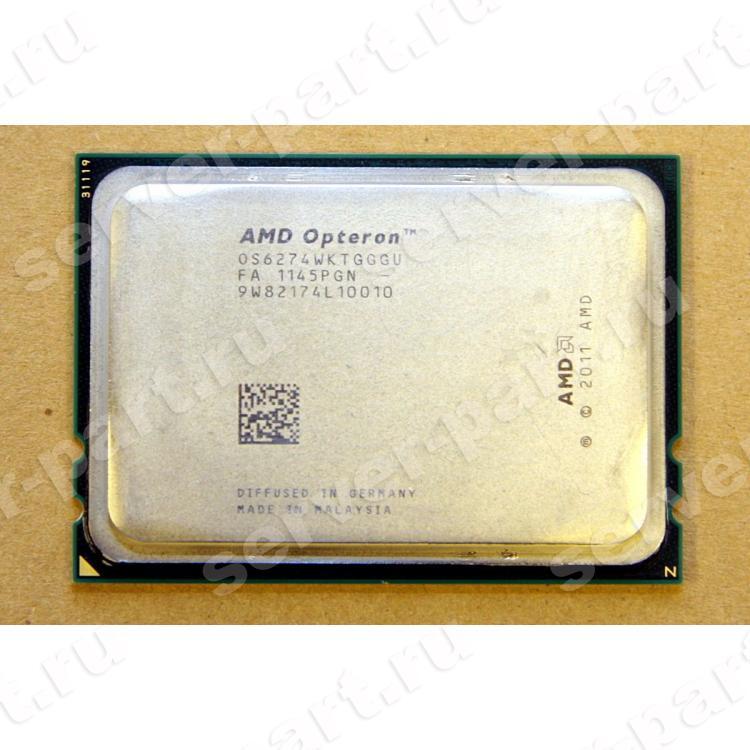 Replacing
Replacing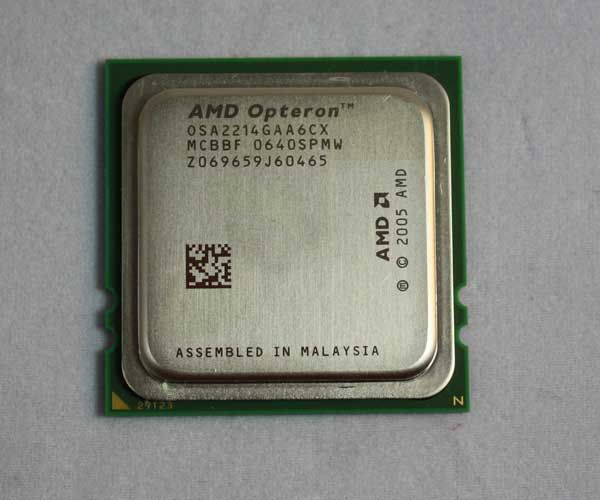 5-Volt DDR DIMM sockets
5-Volt DDR DIMM sockets 0 rear connectors (VT6212)
0 rear connectors (VT6212) 0 ports
0 ports 0 & 1.0B support
0 & 1.0B support 70GHz
70GHz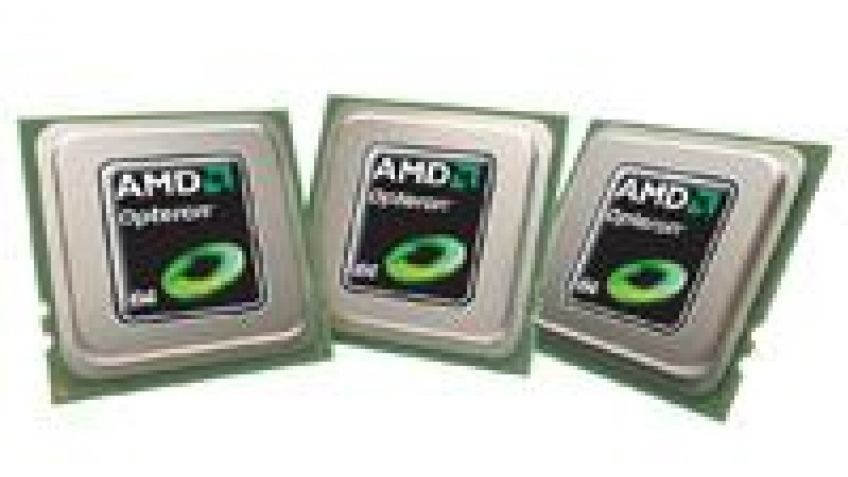 6.32-131.12.1.mc.ug.1.el6.x86_64, x86_64
6.32-131.12.1.mc.ug.1.el6.x86_64, x86_64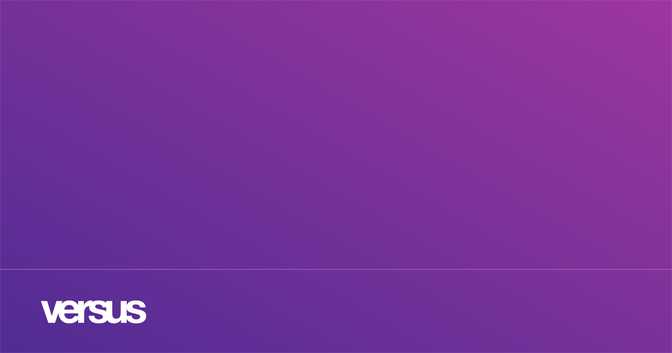 13.0-40-generic, x86_64
13.0-40-generic, x86_64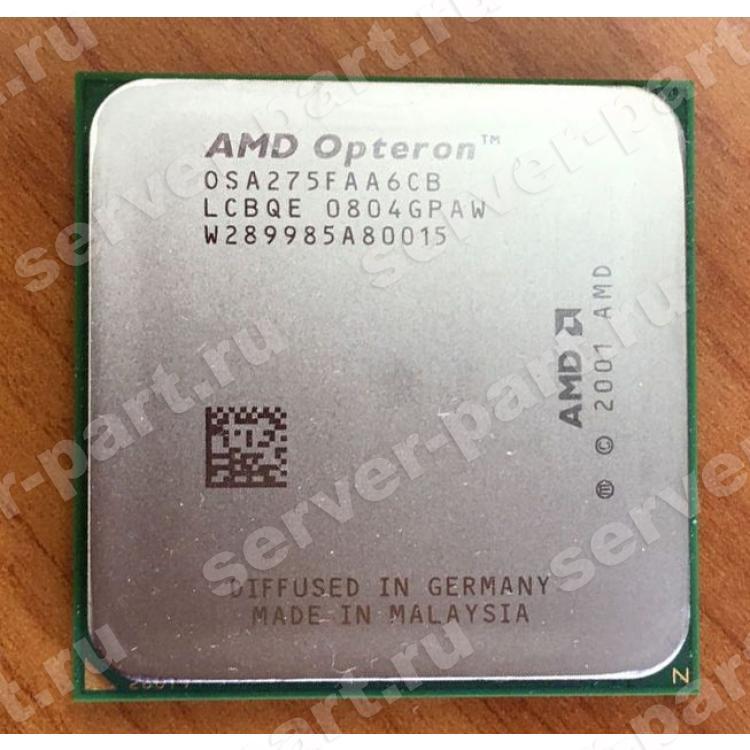 30GHz
30GHz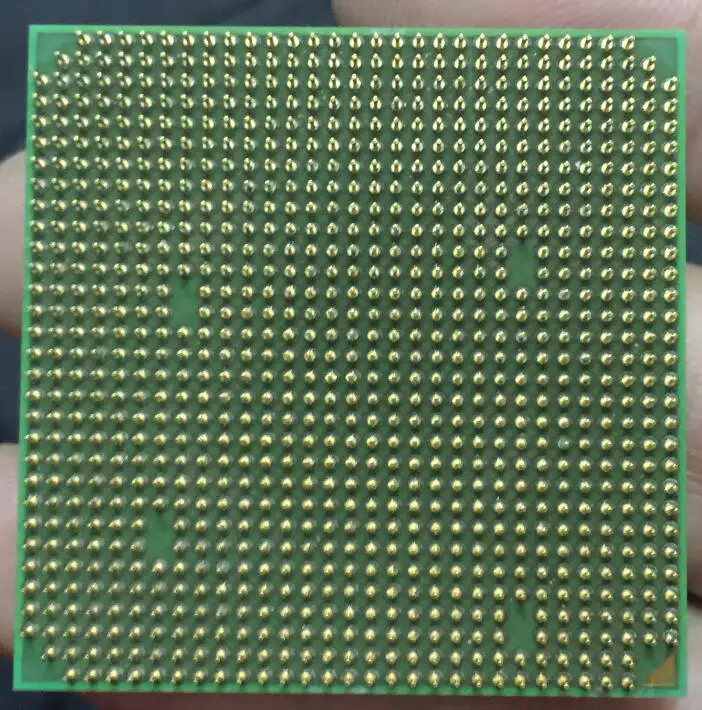 60GHz
60GHz 40GHz
40GHz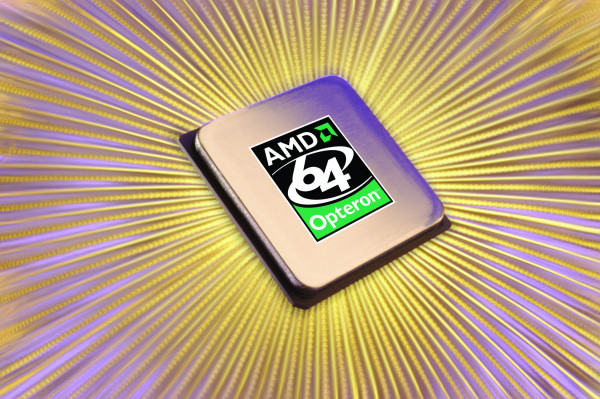 11.0-19-generic, x86_64
11.0-19-generic, x86_64 5.0-48-generic, x86_64
5.0-48-generic, x86_64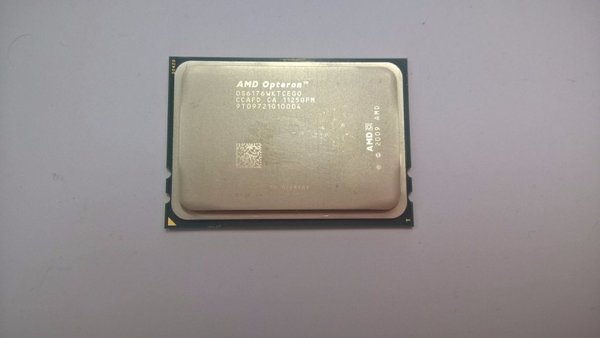 6.32-220.7.1.el6.x86_64, x86_64
6.32-220.7.1.el6.x86_64, x86_64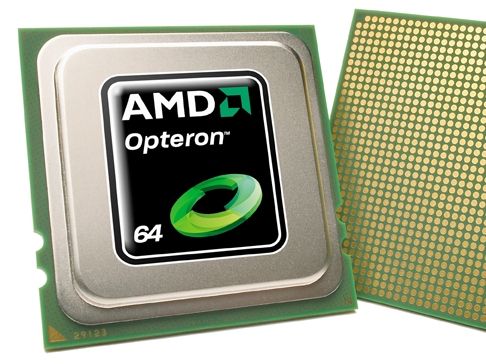 66GHz
66GHz 10.0-327.10.1.el7.x86_64, x86_64
10.0-327.10.1.el7.x86_64, x86_64 2 GHz 2 MB L2
2 GHz 2 MB L2 2 GHz 2 MB L2 based on the first three specs of the first five spec groups.
2 GHz 2 MB L2 based on the first three specs of the first five spec groups. 2 GHz 2 MB L2 but no overall score was given. Click below and use Uk to find all ratings, product awards and conclusions.
2 GHz 2 MB L2 but no overall score was given. Click below and use Uk to find all ratings, product awards and conclusions. The plan for the 64-bit chips included a dual-ported System Request Queue and Crossbar, technology designed to directly connect one proce…
The plan for the 64-bit chips included a dual-ported System Request Queue and Crossbar, technology designed to directly connect one proce… 0
0 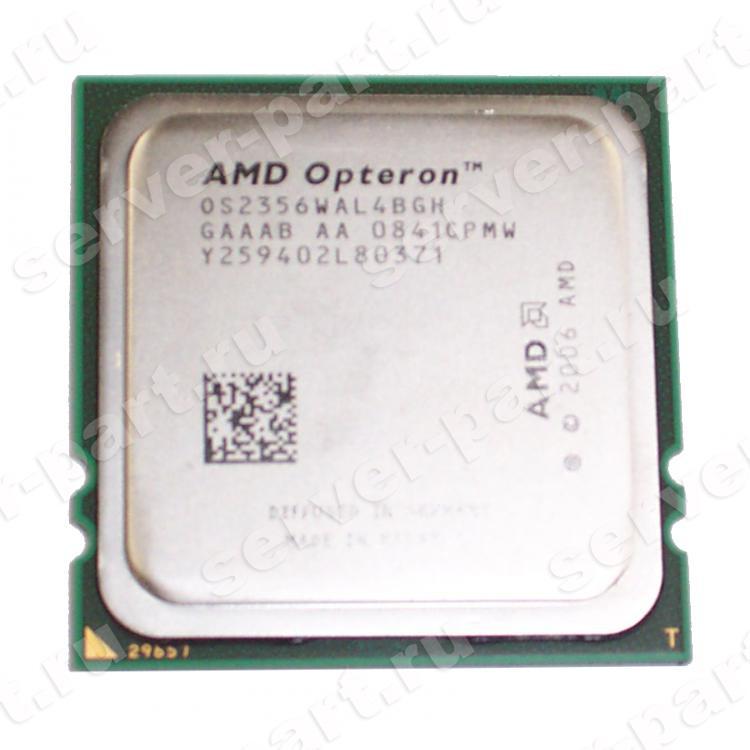 0 ECC Reg
0 ECC Reg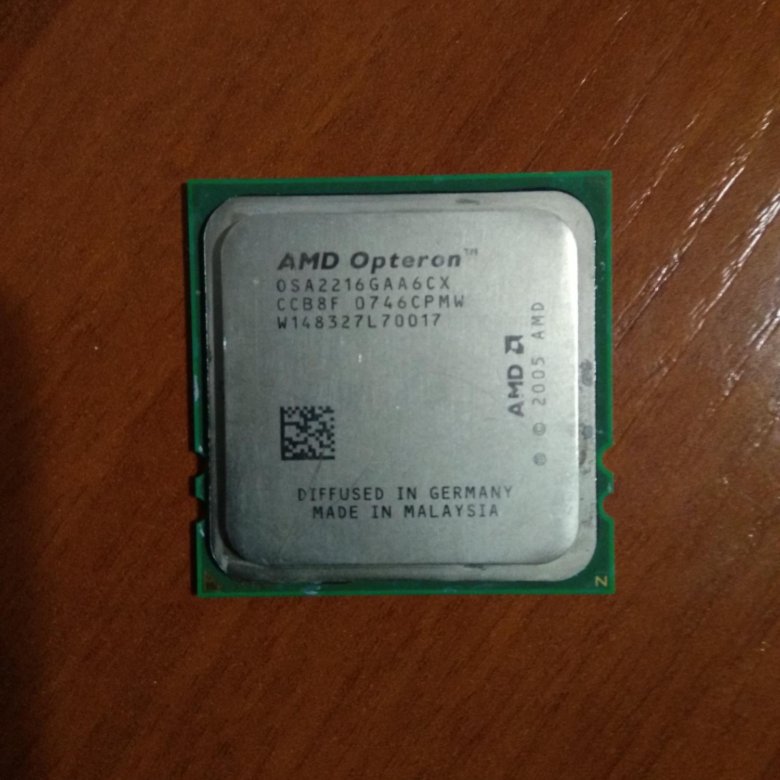 5.1
Baseline optimization
C programs: -Ofast -WOPT:mem_opnds=on +FDO
Fortran programs: -Ofast -LNO:fusion=2 -OPT:fast_complex +FDO
Portability Flags:
178.galgel: -fixedform
Peak Tuning:
168.wupwise: -Ofast -LNO:prefetch_ahead=5:prefetch=3
-OPT:unroll_times_max=8:unroll_size=128:IEEE_NaN_Inf=off:ro=3 -TENV:X=4
-IPA:space=1000:linear=on:plimit=50000:callee_limit=5000
-INLINE:aggressive=on
171.swim: -Ofast -LNO:fusion=2 -m3dnow
172.mgrid: -O3 -LNO:fusion=2:blocking=off
-OPT:Ofast:unroll_times_max=8:unroll_size=256:ro=3
-CG:gcm=off:cflow=off -m3dnow
173.applu: -Ofast -CG:local_fwd_sched=on
-LNO:fusion=2:fission=2:full_unroll_size=10000:prefetch=3
-OPT:ro=3 -TENV:X=3 -WOPT:val=2
177.mesa: -O2 -ipa -OPT:Ofast -fno-math-errno -CG:local_fwd_sched=on +FDO
178.galgel: -Ofast -OPT:fast_complex -CG:use_movlpd=on RM_SOURCES=lapak.f90 +ACML
179.art: -O3 -OPT:ro=2:div_split=on:alias=typed -fno-math-errno -m32
183.
5.1
Baseline optimization
C programs: -Ofast -WOPT:mem_opnds=on +FDO
Fortran programs: -Ofast -LNO:fusion=2 -OPT:fast_complex +FDO
Portability Flags:
178.galgel: -fixedform
Peak Tuning:
168.wupwise: -Ofast -LNO:prefetch_ahead=5:prefetch=3
-OPT:unroll_times_max=8:unroll_size=128:IEEE_NaN_Inf=off:ro=3 -TENV:X=4
-IPA:space=1000:linear=on:plimit=50000:callee_limit=5000
-INLINE:aggressive=on
171.swim: -Ofast -LNO:fusion=2 -m3dnow
172.mgrid: -O3 -LNO:fusion=2:blocking=off
-OPT:Ofast:unroll_times_max=8:unroll_size=256:ro=3
-CG:gcm=off:cflow=off -m3dnow
173.applu: -Ofast -CG:local_fwd_sched=on
-LNO:fusion=2:fission=2:full_unroll_size=10000:prefetch=3
-OPT:ro=3 -TENV:X=3 -WOPT:val=2
177.mesa: -O2 -ipa -OPT:Ofast -fno-math-errno -CG:local_fwd_sched=on +FDO
178.galgel: -Ofast -OPT:fast_complex -CG:use_movlpd=on RM_SOURCES=lapak.f90 +ACML
179.art: -O3 -OPT:ro=2:div_split=on:alias=typed -fno-math-errno -m32
183.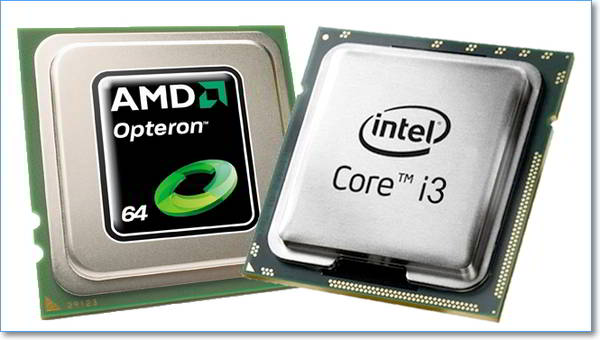 equake: -Ofast -WOPT:mem_opnds=on -CG:local_fwd_sched=on
187.facerec: -Ofast -OPT:treeheight=on:IEEE_NaN_Inf=off:ro=3 -CG:load_exe=0
-LNO:fusion=2 -IPA:plimit=1500 +FDO
188.ammp: -O3 -OPT:alias=disjoint:unroll_times_max=8:Ofast:ro=3
-fno-math-errno -TENV:X=4 +FDO
189.lucas: -Ofast -CG:local_fwd_sched=on -LNO:fusion=2
+FDO
191.fma3d: -O2 -ipa -CG:load_exe=1 -OPT:Ofast:IEEE_arith=3:ro=3
-WOPT:mem_opnds=on:retype_expr=on -IPA:pu_reorder=1 +FDO
200.sixtrack:= -O3 -OPT:Ofast:Olimit=6000 -fno-math-errno -CG:load_exe=1 +FDO
301.apsi: -Ofast -TENV:X=4 -LNO:fusion=2:prefetch=0
Bios Rev 2.33.1.1
All memory slots populated on all CPU(s).
Taskset utility used to bind CPU(s) to processes.
equake: -Ofast -WOPT:mem_opnds=on -CG:local_fwd_sched=on
187.facerec: -Ofast -OPT:treeheight=on:IEEE_NaN_Inf=off:ro=3 -CG:load_exe=0
-LNO:fusion=2 -IPA:plimit=1500 +FDO
188.ammp: -O3 -OPT:alias=disjoint:unroll_times_max=8:Ofast:ro=3
-fno-math-errno -TENV:X=4 +FDO
189.lucas: -Ofast -CG:local_fwd_sched=on -LNO:fusion=2
+FDO
191.fma3d: -O2 -ipa -CG:load_exe=1 -OPT:Ofast:IEEE_arith=3:ro=3
-WOPT:mem_opnds=on:retype_expr=on -IPA:pu_reorder=1 +FDO
200.sixtrack:= -O3 -OPT:Ofast:Olimit=6000 -fno-math-errno -CG:load_exe=1 +FDO
301.apsi: -Ofast -TENV:X=4 -LNO:fusion=2:prefetch=0
Bios Rev 2.33.1.1
All memory slots populated on all CPU(s).
Taskset utility used to bind CPU(s) to processes.